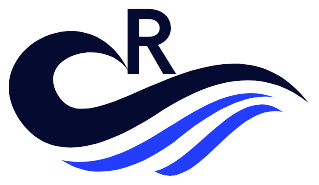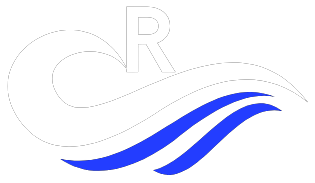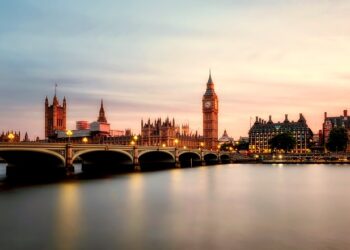Planning a trip to Hawaii in 2023-2024? You’re in for a tropical paradise like no other! With its stunning beaches, lush landscapes, and vibrant culture, Hawaii is a dream destination for many travelers. But when is the best time to visit? In this article, we will explore the optimal months to plan your trip, taking into consideration factors such as weather, crowd levels, and special events. So, grab your sunglasses and get ready to embark on an unforgettable Hawaiian adventure!
When it comes to choosing the best time to visit Hawaii, the weather plays a crucial role. The islands experience warm temperatures year-round, but certain months offer more favorable conditions. From November to March, Hawaii experiences its winter season, characterized by slightly cooler temperatures and occasional rainfall. If you prefer milder weather and smaller crowds, this might be the perfect time for you to explore the islands. However, if you’re a sun-worshipper looking for endless beach days, the summer months of June to September boast longer days, higher temperatures, and less chance of rain. Whether you’re seeking relaxation or outdoor activities, Hawaii has something to offer during every season.
1. What is the best time to visit Hawaii in 2023-2024?
The best time to visit Hawaii in 2023-2024 is during the shoulder seasons, which fall between April and June, and September and November. During these months, the weather is pleasant, with warm temperatures and lower chances of rainfall. You can expect fewer crowds compared to the peak tourist season, making it a great time to explore the islands without feeling overwhelmed.
It’s important to note that Hawaii’s weather is generally mild and enjoyable year-round. However, the winter months (December to February) tend to be rainier, and the summer months (July and August) can be hotter and more crowded due to school vacations. By visiting during the shoulder seasons, you can enjoy the best of both worlds – favorable weather conditions and a more relaxed atmosphere.
2. What is the weather like in Hawaii during the shoulder seasons?
During the shoulder seasons in Hawaii (April to June and September to November), the weather is typically ideal for outdoor activities and beach days. You can expect temperatures to range between 75°F (24°C) and 85°F (29°C), with mild humidity levels. The islands experience a refreshing trade wind breeze, which helps keep the temperatures comfortable.
While occasional rain showers are possible, they are typically short-lived and followed by sunshine. The chances of hurricanes or tropical storms are generally lower during the shoulder seasons, compared to the summer months. It’s always a good idea to check the weather forecast before your trip, but overall, the shoulder seasons offer a great balance of warm, pleasant weather and lower tourist crowds.
3. Are there any major events or festivals during the recommended time to visit?
Yes, there are several major events and festivals that take place in Hawaii during the recommended time to visit, which is between April and June, and September and November. Some notable events include the Merrie Monarch Festival in Hilo, held in April, which showcases traditional Hawaiian hula dancing and attracts visitors from around the world.
In May, the Hawaiian Steel Guitar Festival is held in Waikiki, featuring performances by renowned steel guitarists. Additionally, the Kauai Polynesian Festival takes place in June, celebrating Polynesian culture through music, dance, and arts. These events offer a unique opportunity to immerse yourself in Hawaiian traditions and experience the local culture.
4. How crowded are the popular tourist attractions during the recommended time to visit?
During the recommended time to visit Hawaii (April to June and September to November), popular tourist attractions are generally less crowded compared to the peak tourist season, which is during the summer months. While there may still be visitors at popular sites, the reduced number of tourists allows for a more enjoyable and relaxed experience.
By visiting during the shoulder seasons, you can avoid long lines, secure better accommodation deals, and have more space to explore and appreciate the natural beauty of Hawaii’s attractions. It’s always a good idea to plan and book in advance, especially for popular attractions like Pearl Harbor, so you can make the most of your visit.
5. Are flight and accommodation prices lower during the recommended time to visit?
Yes, flight and accommodation prices in Hawaii are generally lower during the recommended time to visit, which is between April and June, and September and November. These months fall outside of the peak tourist season, so airlines and hotels often offer discounted rates and special deals to attract visitors.
By taking advantage of these lower prices, you can save money on your overall travel expenses and potentially splurge on unique experiences or luxurious accommodations. It’s advisable to book your flights and accommodation in advance to secure the best prices and availability.
6. Can I still enjoy water activities and swimming during the recommended time to visit?
Absolutely! You can still enjoy water activities and swimming during the recommended time to visit Hawaii, which is between April and June, and September and November. The ocean temperatures remain warm throughout the year, ranging between 76°F (24°C) and 82°F (28°C) during these months.
Whether you want to go snorkeling, surfing, kayaking, or simply take a refreshing dip in the crystal-clear waters, the shoulder seasons offer ideal conditions. It’s important to note that some beaches may have stronger currents during certain times, so always check with local lifeguards and follow safety guidelines.
7. Are there any specific wildlife encounters or natural phenomena to look out for during the recommended time to visit?
During the recommended time to visit Hawaii (April to June and September to November), you have the opportunity to witness various wildlife encounters and natural phenomena. One notable event is the arrival of humpback whales, which migrate to Hawaii’s warm waters from Alaska during the winter months, but can still be spotted until April.
Additionally, during the spring months, you may witness the blooming of various flowers, including the vibrant yellow hibiscus, Hawaii’s state flower. It’s also the nesting season for various seabirds, such as the Laysan albatross. Exploring the islands’ nature reserves and national parks will provide ample opportunities to observe and appreciate Hawaii’s unique wildlife.
8. Are there any specific activities or attractions to avoid during the recommended time to visit?
While there are no specific activities or attractions to avoid during the recommended time to visit Hawaii (April to June and September to November), it’s important to plan ahead and be mindful of any closures or limited access due to maintenance or restoration projects.
Some popular hiking trails, such as the Kalalau Trail in Kauai or the Pipiwai Trail in Maui, may have temporary closures for safety reasons or to preserve the natural environment. Checking with local authorities or visitor centers beforehand will help you stay informed and ensure a smooth and enjoyable visit.
9. How can I make the most of my visit to Hawaii during the recommended time?
To make the most of your visit to Hawaii during the recommended time (April to June and September to November), consider the following tips:
1. Plan your itinerary in advance: Research and prioritize the attractions and activities you want to experience, so you can make the most of your time on the islands.
2. Book accommodations early: Secure your preferred accommodations well in advance to take advantage of the best prices and availability.
3. Rent a car: Having a rental car will give you the freedom to explore the islands at your own pace and discover hidden gems.
4. Embrace the local culture: Attend festivals, try local cuisine, and engage with the friendly locals to truly immerse yourself in Hawaiian culture.
10. Can I expect good surfing conditions during the recommended time to visit?
Yes, you can expect good surfing conditions during the recommended time to visit Hawaii, which is between April and June, and September and November. These months are known for consistent swells and favorable wind conditions, making it an ideal time for surfers of all levels.
The North Shore of Oahu is particularly famous for its world-class waves, attracting professional surfers from around the globe. However, it’s important to note that some breaks may be more suitable for experienced surfers, while other spots offer gentler waves for beginners. Always check with local surf schools or experienced surfers for advice on the best spots for your skill level.
11. Are there any specific precautions I should take when visiting Hawaii during the recommended time?
When visiting Hawaii during the recommended time (April to June and September to November), it’s important to take certain precautions to ensure a safe and enjoyable trip:
1. Sun protection: Apply sunscreen regularly, wear a hat, and use protective clothing to avoid sunburn and heatstroke.
2. Water safety: Follow the instructions and warnings of lifeguards, especially if you’re not an experienced swimmer.
3. Respect nature: Stay on designated trails, don’t disturb wildlife, and avoid touching or stepping on coral reefs.
4. Stay hydrated: Drink plenty of water, especially when engaging in outdoor activities or spending time under the sun.
12. Can I witness a volcano eruption during the recommended time to visit?
The chances of witnessing a volcano eruption during the recommended time to visit Hawaii (April to June and September to November) are relatively low. However, Hawaii Volcanoes National Park on the Big Island offers an opportunity to explore and witness the volcanic landscapes up close.
While the most recent eruption of Kīlauea volcano occurred in 2018, the park provides visitors with a chance to see the aftermath and learn about the volcanic activity. It’s essential to check the latest updates from the National Park Service to ensure the park is safe and accessible during your visit.
13. Is it necessary to make reservations for popular restaurants during the recommended time to visit?
While it’s not always necessary to make reservations for popular restaurants during the recommended time to visit Hawaii (April to June and September to November), it’s advisable if you have specific dining preferences or want to experience renowned eateries.
Hawaii is known for its diverse culinary scene, and some restaurants can get busy, especially during weekends or peak dining hours. Making reservations in advance gives you peace of mind and ensures you can secure a table at your desired restaurant. Additionally, it’s a good idea to check if any restaurants have specific dress codes or require reservations for special events or themed nights.
14. Can I spot sea turtles during the recommended time to visit?
Yes, you can spot sea turtles year-round in Hawaii, including during the recommended time to visit (April to June and September to November). These beautiful creatures can often be seen basking on the beaches or swimming in the clear waters near coral reefs.
Some popular spots for turtle sightings include Laniakea Beach on Oahu’s North Shore, Ho’okipa Beach on Maui, and Punalu’u Beach on the Big Island. Remember to keep a safe distance, never touch or disturb the turtles, and observe them from a respectful distance to ensure their well-being.
15. Are there any specific cultural sites or historical landmarks to explore during the recommended time to visit?
Hawaii is rich in cultural sites and historical landmarks that can be explored during the recommended time to visit (April to June and September to November). Some noteworthy places include:
1. Pearl Harbor: Visit the USS Arizona Memorial and explore the museums and exhibits that commemorate the events of World War II.
2. Iolani Palace: Located in Honolulu, it is the only royal palace in the United States and offers a glimpse into Hawaii’s monarchy.
3. Lahaina Historic District: Located on Maui, this district showcases the town’s historic whaling era, with preserved buildings and museums.
4. Pu’uhonua o Hōnaunau National Historical Park: Situated on the Big Island, this park was a place of refuge in ancient Hawaiian times and offers insights into traditional Hawaiian customs and practices.
16. Can I visit multiple islands during the recommended time to visit?
Absolutely! Visiting multiple islands during the recommended time to visit Hawaii (April to June and September to November) is a popular choice. Each island has its unique charm and attractions, allowing you to experience the diversity of the Hawaiian archipelago.
You can easily travel between the islands by taking short domestic flights or using inter-island ferries. Some popular island-hopping itineraries include visiting Oahu for its vibrant city life and iconic Waikiki Beach, Maui for its stunning landscapes and the famous Road to Hana, and the Big Island to explore its active volcanoes and pristine beaches.
17. Can I witness a beautiful sunrise or sunset during the recommended time to visit?
Yes, you can witness breathtaking sunrises and sunsets throughout Hawaii during the recommended time to visit (April to June and September to November). Depending on the island and location, you can choose between witnessing the sunrise above the Pacific Ocean or enjoying a sunset over the scenic landscapes.
For stunning sunrises, popular spots include Haleakala National Park on Maui, where you can watch the sunrise above the clouds, or the eastern shores of Oahu, such as Lanikai Beach. For mesmerizing sunsets, try the west coast of any island, like Waikiki Beach on Oahu or Ka’anapali Beach on Maui.
18. Are there any specific hiking trails to explore during the recommended time to visit?
Hawaii offers a plethora of stunning hiking trails to explore during the recommended time to visit (April to June and September to November). Some notable trails include:
1. Kalalau Trail: Located on the Na Pali Coast of Kauai, this challenging trail offers breathtaking views of rugged cliffs and pristine beaches.
2. Diamond Head Trail: Situated on Oahu, this iconic trail leads to the summit of Diamond Head Crater, providing panoramic views of Waikiki and the Pacific Ocean.
3. Pipiwai Trail: Found in Haleakala National Park on Maui, this trail takes you through a lush bamboo forest and leads to the impressive Waimoku Falls.
4. Kilauea Iki Trail: Located in Hawaii Volcanoes National Park on the Big Island, this unique trail allows you to walk across a volcanic crater and witness the remnants of past eruptions.
19. What should I pack for a trip to Hawaii during the recommended time to visit?
When packing for a trip to Hawaii during the recommended time to visit (April to June and September to November), consider including the following items:
1. Lightweight clothing: Pack breathable and comfortable clothing suitable for warm weather, including shorts, T-shirts, and sundresses.
2. Swimwear: Don’t forget your bathing suit for enjoying the beautiful beaches and water activities.
3. Sun protection essentials: Bring sunscreen, sunglasses, a hat, and a rash guard or cover-up for added sun protection.
4. Light rain jacket: While rain showers are typically short-lived, it’s always a good idea to have a lightweight rain jacket or poncho on hand.
5. Hiking shoes: If you plan to explore the islands’ hiking trails, pack sturdy and comfortable hiking shoes or sneakers.
20. Can I experience traditional Hawaiian music and dance during the recommended time to visit?
Yes, you can experience traditional Hawaiian music and dance throughout Hawaii during the recommended time to visit (April to June and September to November). Various venues and events showcase the rich cultural heritage of the islands.
Attending a traditional luau is a popular way to experience Hawaiian music, hula dancing, and indulge in delicious local cuisine. You can also find live performances at cultural centers, hotels, and even beachfront parks. Don’t miss the chance to learn a few hula moves or listen to the sweet melodies of the ukulele during your visit to Hawaii.
In conclusion, determining the best time to visit Hawaii in 2023-2024 requires careful consideration of various factors. Firstly, one must take into account the weather patterns and seasonal variations. The months of April to September generally offer warm and sunny weather, making them ideal for beach activities and outdoor adventures. However, these months also tend to be more crowded with tourists, which can affect the overall experience. On the other hand, the months of October to March may have slightly cooler temperatures, but they offer a quieter and more serene atmosphere.
Secondly, it is important to consider personal preferences and interests. If you are eager to witness the magnificent humpback whales, visiting during the winter months is highly recommended as this is when they migrate to the Hawaiian waters. On the other hand, if you are a surfing enthusiast, the winter months bring bigger and more challenging waves, making it an ideal time for surfing enthusiasts to visit.
Lastly, it is essential to consider any budgetary constraints. Keep in mind that the cost of accommodation and flights can vary greatly depending on the time of year. Generally, the low season, which falls between April to June and September to November, tends to offer more affordable prices and better deals.
Ultimately, the best time to visit Hawaii in 2023-2024 depends on a combination of weather preferences, personal interests, and budget considerations. Whether you prefer the bustling atmosphere of the summer months or the serene tranquility of the winter season, Hawaii has something to offer year-round. So plan ahead, do some research, and make the most of your visit to this tropical paradise!










